8 Best All-time Video Content Examples for E-commerce
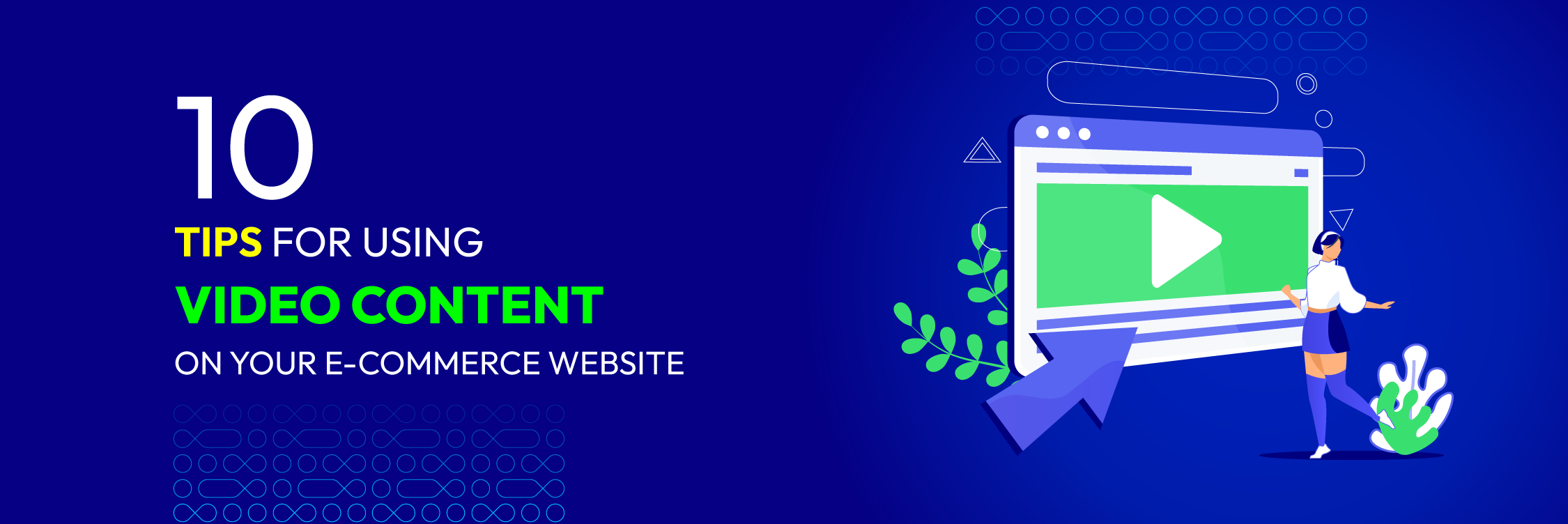
Are you struggling to attract your audience with your e-commerce content? In today’s eCommerce market, just showcasing your products isn’t enough. Customers now desire more. They need engaging, dynamic content that meets their needs. One of the most effective strategies is to use video content, but where do you begin?
In this article, we will show the 8 best all-time video content examples for e-commerce from which you can learn. They not only help you to attract customers’ attention but also drive conversions. These proven examples are the key to converting casual viewers into loyal customers.
Reasons Why Video Is Important To E-commerce?

-
Improved product understanding: Videos can explain things better. When done well, they can make even complex products become easy to understand. By letting viewers see and hear, marketers can easily prove the product’s value.
-
Enhanced trust and credibility: Instead of just reading text or viewing static images, customers will see real people using or talking about the product. By associating a face and voice, customers can connect with your brand more deeply. Moreover, videos with customer testimonials further enhance this trust by highlighting genuine experiences and positive feedback.
-
Revenue boost: Videos are highly effective in creating a product experience and convincing people to buy items. Wyzowl states that 88% of consumers were persuaded to purchase a product after watching a product’s video. Videos showcase products from all angles and real-life scenarios, which influences buying decisions.
-
Improved visibility and ranking: Search engines often prioritize sites with video content because they tend to attract visitors more. By increasing the time store visitors spend on your site and decreasing bounce rates, videos signal to search engines that the content is really engaging and valuable. Therefore, you can enhance your site’s visibility and improve its rankings.
8 Best Examples Of eCommerce Videos
Smart Nora

Smart Nora video is an excellent example of targeting customers’ pain points and presents the product as the solution.
The video usually begins by clearly identifying the issue of snoring, which grabs the viewer’s attention. It then uses straightforward narration and clear visuals to demonstrate how the Smart Nora device operates, focusing on features like the snoring sensor and the inflatable insert that gently adjusts the pillow to stop snoring without disturbing the user. The calm tone is also suitable for the product’s goal of providing a peaceful night’s sleep.
The video also shows real-life scenarios of people using Smart Nora in their bedrooms, making it easier for viewers to imagine ways to use it. Furthermore, testimonials from satisfied customers add credibility and reinforce the device’s effectiveness.
Dollar Shave Club

The videos by Dollar Shave Club are typical examples of comparison product videos. Unlike their competitors, who often offer complex products with features that don’t provide real value to customers, Dollar Shave Club focuses on creating a simple product that addresses the core needs of users.
As a result, Dollar Shave Club videos clearly communicate the value of their product. They emphasize that their razors are designed to meet core needs without any unnecessary extras. They also show how competitors complicate shaving, proving their simple approach offers a better experience. This clear value proposition helps potential customers understand why they should choose Dollar Shave Club over more complicated alternatives.
Square Photo Studio
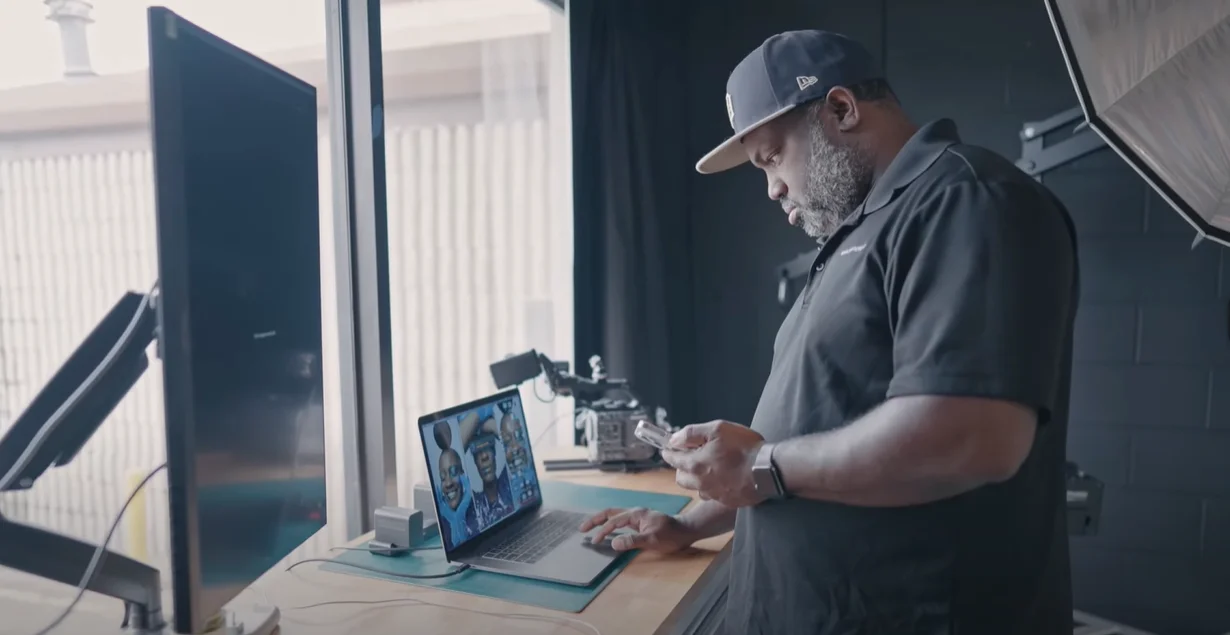
The Square Photo Studio team helps customers take stunning pictures of products to enhance your product listings and increase conversion rates. They offer a perfect 50-second demo video to summarize their services. The video outlines what you can expect and demonstrates how their expertise can elevate your online sales.
It also features impressive real-life examples and behind-the-scenes footage, showcasing their process for creating top-notch product photos for clients.
Deliciou

An effective product marketing strategy often involves clearly defining the product’s purpose, identifying the target audience, and emphasizing the key benefits. Deliciou demonstrates this approach in their short explainer video.
The video opens by introducing the product in a straightforward way, ensuring that viewers immediately understand what it is. It then briefly explains the product’s primary function, which makes it easy for potential clients to grasp its value. By focusing on these core elements, Deliciou delivers a message that is both clear and impactful.
The brand video remains simple and concise, just focusing on the essentials. By avoiding unnecessary details, it successfully holds the audience’s attention from start to finish. The clean and engaging visuals complement the narration perfectly, making the video more accessible to a wider audience while effectively conveying the product’s benefits.
Bailey Nelson

Bailey Nelson videos combine product highlights with lifestyle elements to create a visually engaging experience. The videos use bright and bold colors that catch the viewer’s attention, reflecting the brand’s youthful and energetic personality.
Buying a new product is hard. But if you can see how established products cost you more and offer far little value, it’ll be much easier. That’s how Bailey Nelson’s product video sells their products.
The video contains beautiful shots of the actual products, making them appealing and attractive. They blend their eyewear into everyday scenarios, showing people wearing their glasses in various locations like cafes, parks, and offices. This approach helps potential customers imagine how the products are suitable for their own lives.
Glossier

Glossier creates authentic content that impresses its audience. By showcasing real customers with diverse backgrounds and skin types, Glossier ensures that viewers can see themselves in the brand’s narrative. This approach will help to emphasize the effectiveness of their products but also build trust and foster inclusivity.
Besides, when the brand shares behind-the-scenes looks at how they make their products, it helps people feel like they are part of a community. This makes customers feel more connected to the brand. The casual tone and quality visuals also strengthen emotional connections, leading to a loyal customer base.
The Oodie

Oodie product videos provide a lifestyle perspective of their products. Instead of just showing the product itself, the video displays people using the Oodie blanket hoodie in various real-life situations, like relaxing at home, working from home, or enjoying a cozy movie night. Thus, videos can help viewers visualize how the product can enhance their daily lives.
Besides, humor is an important element in The Oodie’s videos. They often include playful and humorous scenes that make the content enjoyable to watch. This lighthearted approach helps to create a positive association with the brand and makes the videos memorable.
Qure
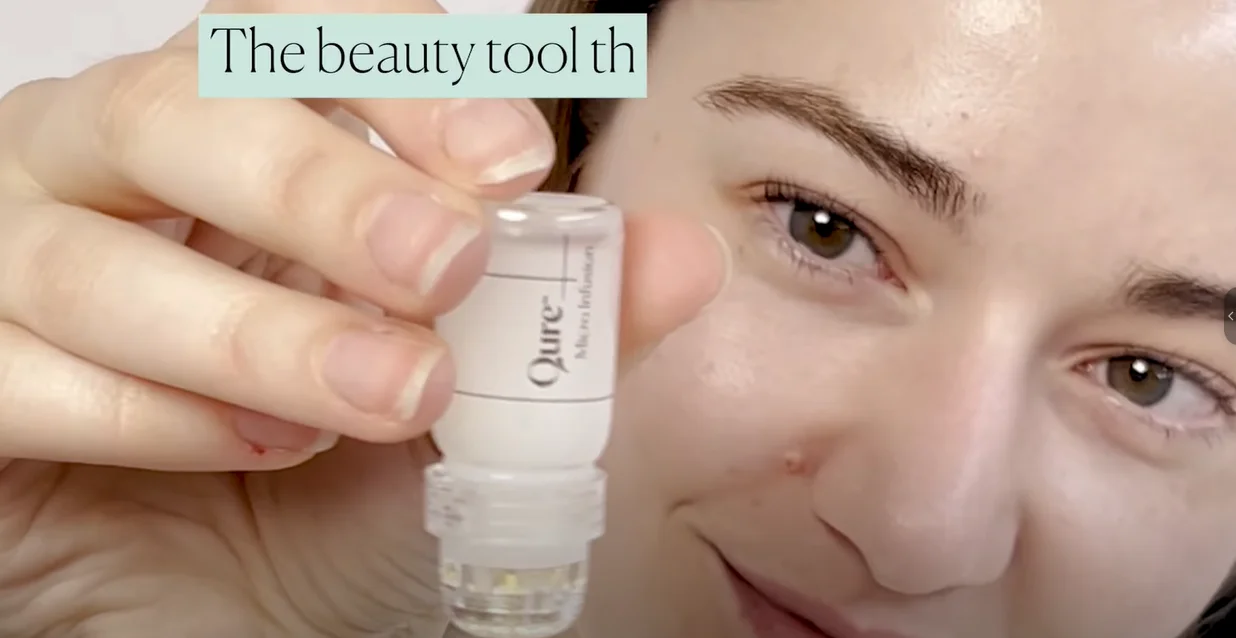
Qure provides people with the products they need to improve their skin condition. The short explainer videos emphasize how the products stand out from others in the market. The appealing visuals clearly showcase their actual size.
Moreover, these videos avoid overly technical explanations and lengthy testimonials, keeping the content straightforward and concise while addressing any potential questions viewers may have. The smooth background music also adds an enjoyable touch to the viewing experience.
10 Tips for Using Video Content To Boost E-commerce Sales
Through video content, customers get information easily. Here are 10 effective tips to increase sales that you should know in eCommerce video marketing.
Create Compelling Product Videos
One of the most useful methods to increase sales is to create a product demonstration video. Product videos showcase your product’s features from various angles and in close detail. This approach helps potential customers understand the product better and builds trust in its quality.
Moreover, eCommerce product videos are efficient in delivering key product information quickly. Customers don’t need to read lengthy, complex descriptions of products. According to Hubspot, 73% of consumers tend to make a purchase after watching a product’s video content. Therefore, putting product videos into your eCommerce strategy can contribute to enhanced sales and customer engagement.
Induce a Dedicated Video Section on The Website
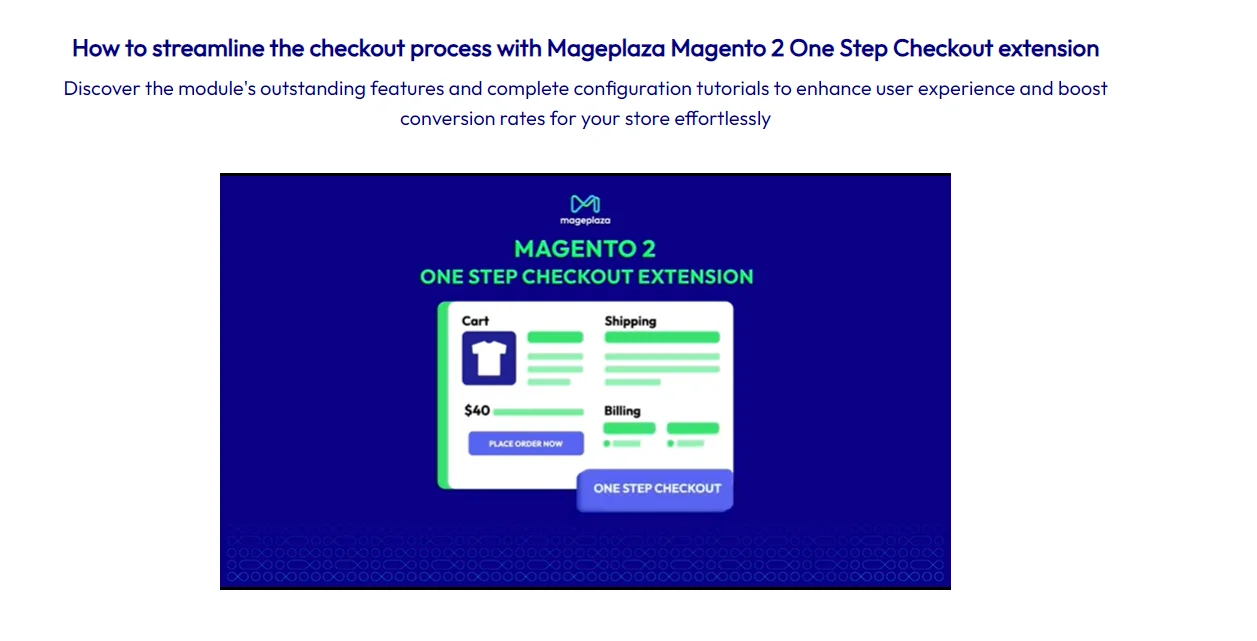
An eCommerce website contains a wide variety of content, including product descriptions, images, videos, and customer reviews. When you keep all the product videos in one place, you make it easier for customers to find the content they are looking for and gain a clearer understanding of your products.
Additionally, you should consider uploading these videos to YouTube because this platform not only enhances accessibility but also boosts visibility. While videos can be embedded across various landing pages, it’s crucial to maintain a separate section for videos to ensure they are easily accessible.
Provide How-To Video Tutorials
Videos are not only a means of showcasing products; they are also an effective tool for educating and guiding customers through video commerce. Among various types of content, instructional videos consistently attract greater attention and engagement. By providing how-to guides, videos, and responses to customer inquiries, businesses can decrease customer concerns and promote the connection with their audience.
When containing how-to eCommerce videos on product pages, you can help customers clearly understand the product’s value and functionality. These videos not only address customer pain points quickly but also position your brand as a trusted source of knowledge and support.
Moreover, such content helps drive organic traffic and generates new leads by appealing to viewers who urge problem-solving solutions. Ultimately, these videos demonstrate your care for the audience, which greatly benefits your eCommerce store.
Encourage User-Generated Video Content

Usually, just a glossy e-commerce product video is not enough to drive potential customers to your sales channel. When shopping online, some customers may have issues with trusting how the actual product will look. No matter how good and professional your e-commerce product video is, it can still appear too polished to attract customers.
User-generated content can be an effective method to bridge this trust gap. Including videos of real people using your product or showcasing their results helps other customers understand its quality, appearance, and functionality. Consequently, user-generated videos can persuade customers to use your products.
Make E-Commerce Video Ads
Video ads are considered an effective method to promote eCommerce products across various digital platforms, including social media and gaming apps. These ads often appear to blend in with regular posts from friends, family, or other followed accounts rather than standing out as obvious advertisements.
In eCommerce video ads, it is necessary to capture the audience’s attention in the first 5 seconds. Thus, you need to keep your video ads short and ensure they showcase your product clearly. By doing so, you can achieve more clicks, shares, and sales.
Collaborate with Influencers for Video Content

Influencer marketing become an essential part of modern marketing strategies because influencers have a lot of trust and influence over their followers. By using video influencer marketing, companies can reach highly engaged and targeted audiences who are interested in the content shared by influencers.
By leveraging video influencer marketing, companies can tap into niche markets effectively. This way allows them to reach audiences that are highly engaged and receptive to the content shared by influencers.
Unlike traditional advertising, influencer marketing builds on the trust and loyalty that influencers already have in their audience. When influencers share their experiences with the product, it helps promote trust among their followers. So, partnering with influencers can be a smart move to boost your sales.
Include Storytelling Video
People tend to connect more deeply with emotional content. Creating video content with a compelling story or filmmaking techniques can evoke emotions in viewers. This emotional connection helps to increase likes, shares, and comments from customers.
By embedding your product within a well-crafted story, you not only increase its exposure but also enhance its capacity to be shared. This is because audiences are more inclined to share content they have connected with emotionally. When a story evokes strong emotions, it conveys a potent message, making it highly shareable due to its emotional and entertainment value.
Furthermore, storytelling is a strategic method for building a distinct brand identity, as it leaves a lasting impression on the audience.
Showcase Video Testimonials
New customers often put more trust in the opinions of other customers than your direct video. Product reviews from customers can enhance the credibility and loyalty of your brand. Potential buyers often rely on reviews to determine whether to continue with a purchase from your brand.
Providing excellent service to your current customers is essential, as they will become your brand advocates in the future. You need to encourage them to share their experiences with your product through short videos. These videos can serve as powerful endorsements, so you should post them on your YouTube channel and feature them in the testimonial section of your website.
Thus, by showcasing authentic customer experiences, you can increase the number of new customers you attract to your brand.
Create Interactive and Entertaining Videos
Creating interactive and entertaining videos can raise user engagement on your e-commerce website. Adding features like quizzes and polls can further showcase how a product works, making the videos more engaging.
For example, a skincare brand could incorporate a quiz to help viewers identify their skin type and recommend suitable products. These interactive elements allow customers to enjoy the content while making informed purchasing decisions without leaving the video.
Moreover, adding clickable elements like shoppable videos and informational pop-ups can make the shopping experience easier and more enjoyable for users. The entertaining video has the potential to go viral and be widely shared, as people love entertainment. By delivering creativity into your videos, you can attract more customers and drive sales.
Share the Brand Story via Video

Not everyone is familiar with your brand, but a compelling story can change that. Instead of relying just on a lengthy ‘About Us’ page, which many visitors may overlook because reading such a long story is time-consuming. Instead, you can tell your brand’s story through a visually engaging video.
Adding your brand story video in different places helps to reach more people. You can put it on your ‘About Us’ page, add it to welcome emails, and use it when hiring new employees. This video will help people know your brand better and trust you more, making it easier to work with big eCommerce companies in the market.
Moreover, sharing your company’s start, mission, and goals in an interesting way will impress potential partners and customers.
5 Best Places You Should Share E-commerce Videos
Homepage or Storefront
The website’s homepage or storefront is often the first impression potential customers have of your brand. Putting a compelling video here can get the audience’s attention and convey your brand’s message quickly.
Additionally, adding videos to marketing materials for the same products can enhance visibility and improve overall results.
Product Page
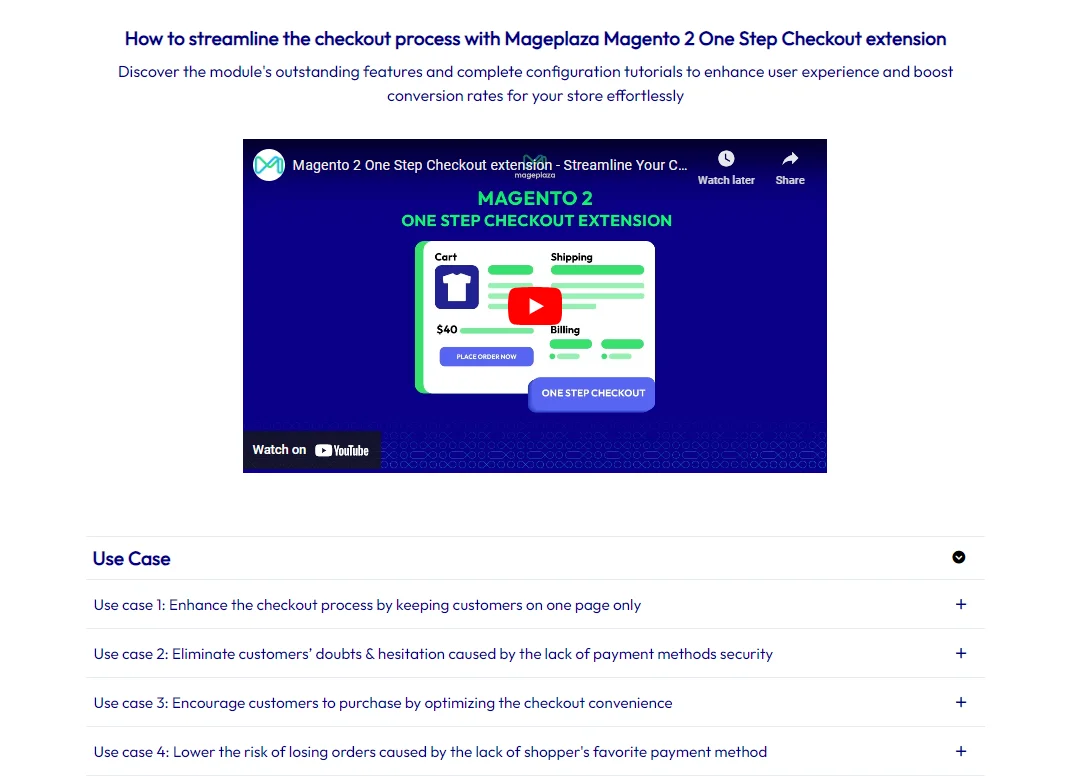
It is necessary to add product videos to your product pages. Watching the product in action can increase customer confidence and lead to more sales.
Because most people like watching videos over reading text or scrolling through images, you should apply a video-first approach to your product pages. This approach ensures that visitors can learn about your product via informative videos.
Social media
Social media platforms are strong tools for reaching a broad audience. The 2023 Emarketer report reveals that 69.7% of Gen Z use Instagram for product and brand discovery, while 73% use TikTok. Facebook and YouTube also play an important role in attracting customers.
To maximize visibility, businesses should use both organic channels and paid placements. Organic sharing on YouTube and Instagram allows for broad audience reach and authentic engagement. At the same time, investing in social ads can repurpose content to boost visibility and attract targeted customers.
Google or YouTube Search Ads

Google and YouTube ads are excellent for placing your videos for digital advertising or retargeting. As the top two search engines, they offer access to a large database of potential clients for your videos.
Furthermore, These videos can be linked directly to the online store’s product page, making shopping easy. This approach also helps to convert searches into sales.
Email Newsletter
Email newsletter is also a popular place for sharing eCommerce videos with your target audience. Videos can make your emails more vibrant and provide valuable content to your subscribers. Therefore, including a video not only boosts click-through rates but also attracts readers’ interest. Oberlo has shown that adding a video to the email newsletter can increase click-through rates by up to 300%.
Conclusion
Using video content in your e-commerce strategy can considerably boost customer engagement, build trust, and even increase sales. Therefore, when you take advantage of the examples and tips in this article 8 Best All-time Video Content Examples for E-commerce, you can create appealing videos that connect with your audience and take your e-commerce business to the next level.





![Top 20+ Must-have Shopify Apps for 2025 [Free & Paid] - Mageplaza](https://cdn2.mageplaza.com/media/blog/must-have-shopify-apps/top-must-have-shopify-apps.png)
![[2025 Updates] Top 10+ Upsell Apps for Shopify - Mageplaza](https://cdn2.mageplaza.com/media/blog/best-upsell-shopify-app/cover.png)